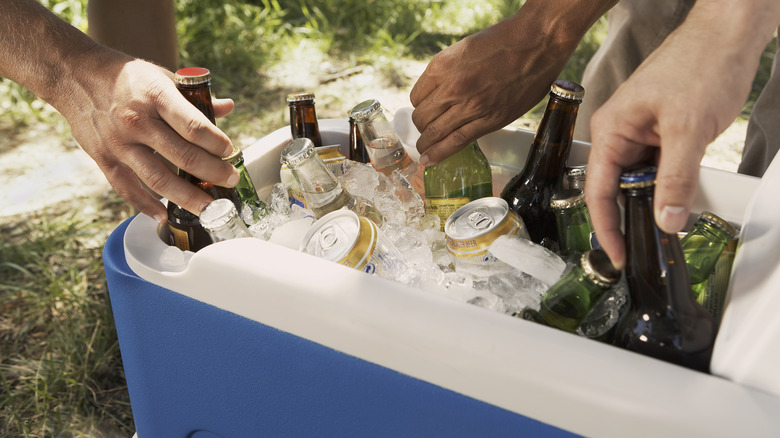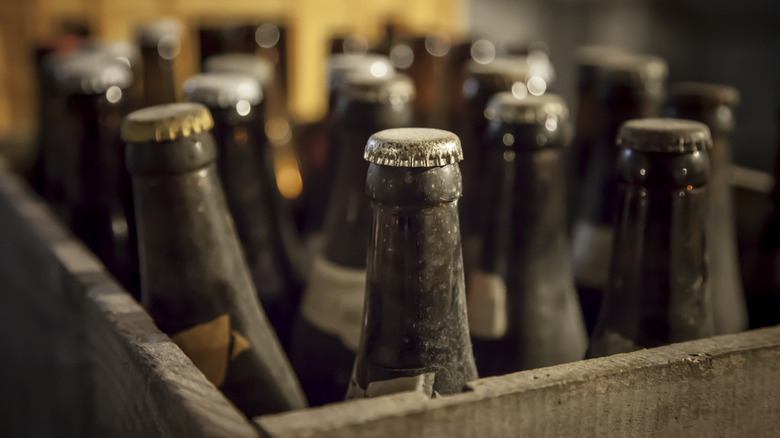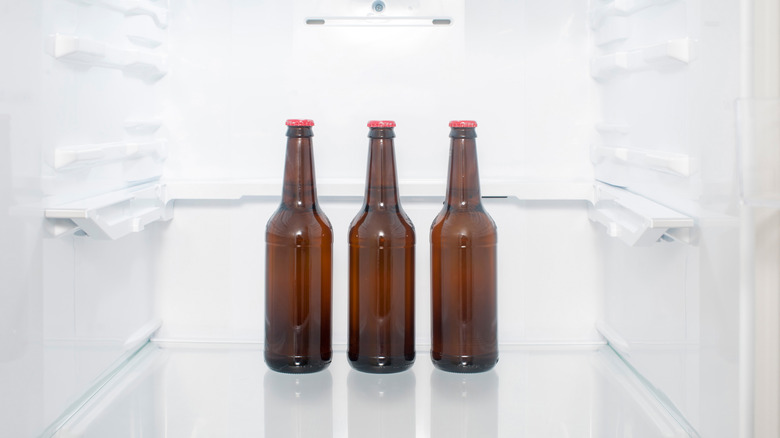How Long Before Canned And Bottled Beer Expires?
While you might assume that beer gets better with time, like fine wine, the reality is a bit murkier. Beer doesn't have an expiration date in the traditional sense — where it becomes unsafe to drink after a certain point — but it does have a best-by date. This indicates when the beer's quality, according to the brewer's standards, starts to decline, meaning it will no longer offer the crisp, complex, or hoppy flavors intended by its makers. But, don't throw out that beer that's been chilling in the back of your fridge for ages — at least, not yet.
The best-by date stamped on most beers is a soft guideline, not a hard deadline. Beer consumed past the best-by date is still safe to drink, it just might not be as tasty as it could be. Stored at room temperature, beer can be kept for five to nine months past the best-by date, but if refrigerated, it can last two to three years. These are some wide ranges, but this is because factors such as packaging and beer type influence a beer's longevity.
Canned beers typically have the longest shelf-life, as their packaging blocks out the most light, followed by dark bottles, then clear or light-colored bottles. A similar rule of thumb applies to the beer itself; darker beers and those with higher alcohol content tend to age more gracefully, whereas lighter, hoppy beers are best consumed closer to their best-by date.
The science of aging beer
When a crisp, perfectly brewed beer turns into one that's less palatable, it's often due to oxidation, a chemical reaction that fundamentally changes the beer's flavor. Oxidation occurs when the beer is exposed to — you guessed it — oxygen, leading to the breakdown of flavor compounds and the formation of new ones.
Environmental factors such as heat, light, and improper storage can speed up the oxidation process. For instance, light, especially UV light, can interact with the hops in beer, causing further chemical breakdown. This is why cans and dark bottles of beer have a longer shelf-life than their clear counterparts.
When a beer is past its prime, you'll usually be able to tell based on distinctive changes in its sensory characteristics. Beer that's gone bad will may be less carbonated, or have an off-taste, often described as skunky or wet cardboard-like. While consuming oxidized beer isn't harmful, it's certainly not an ideal drinking experience. The good news is that once you understand the science behind beer spoilage, you can take smart steps to prevent it.
Prolonging the lifespan of your canned or bottled beer
Proper storage is the key to a long and happy life for your favorite brews. Following the "3-30-300 rule" can be helpful: avoid exposing beer to hot temperatures (90 degrees Fahrenheit) for more than three days, at room temperature (around 72 degrees Fahrenheit) for 30 days, and aim to keep it refrigerated (38 degrees Fahrenheit) for up to 300 days. Refrigeration is ideal, and actually, beer or wine fridges provide a better environment than your standard refrigerator, maintaining slightly higher temperatures, between 38 to 50 degrees Fahrenheit.
For those who tend to sample beers instead of finishing them, remember that once opened, beer is best consumed on the same day to capture its full flavor essence. When all else fails, you can use that leftover beer in cooking! No matter how old that beer is in the back of your fridge, it might still have some life left in it.


